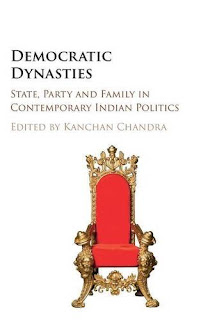by National Centre for Disease Control (NCDC), Ministry of Health and Family Welfare, Government of India, 2016.
Preface
The health system faces a challenge of effective communication regarding threats posed by public health emergencies and the actions needed for controlling them. Risk communication plays a vital role in mitigating the adverse impacts of a public health emergency. However, recent events have shown that risk communication is not easy to manage. The International Health Regulations (IHR) (2005) recognizes risk communication as a critical pillar for developing national core capacity during emerging infectious diseases and other IHR (2005) related events. Such communication needs to be carefully planned and implemented as well as properly integrated with emergency management activities and operations. In July 2014, India submitted the new national Action plan on IHR (2005), identifying risk communication as one of the areas where more needs to be done. While complying by IHR(2005) requirements, India needs to have a national risk communication plan for all public health emergencies as well as fundamentals of risk communication well understood by all concerned stakeholders of IHR (2005). Technical knowhow of disease control has been applied for addressing the prevention of importation of Ebola from West African countries. Govt. of India has taken a lead role in control of Influenza pandemic, Ebola screening of travelers returning from West Africa and ongoing outbreak of influenza A/H1N1. Experience from these endeavors have highlighted that risk communication needs to be understood by technical and administrative stakeholders and managed more systematically (Health care workers, Civil society, media, tourism, Points of Entry, MEA, MHA). It is expected that 'Guidance on National Plan on Risk Communication for Public Health Emergencies' shall enhance capacity of IHR (2005) stakeholders for understanding the nuances of risk communication and provide a framework of principles and approaches for the communications of health risk information to diverse audiences. It is intended for all health care staff, stakeholders and personnel from government agencies and private organizations who must respond to public concerns in the event of a Public Health Emergency. Public health professional must understand the needs of the community and be able to facilitate dialogue concerning the technical issues of public health risk and the psychological, political, social, and economic needs of the community. The Guidance document begins with brief descriptive material about guiding principles for communicating health risk followed by details on identification of partners and stakeholders in the country, and functional coordination and communication mechanisms to be established when informing the public and in managing the relations between the authorities and the media. In addition, highlights the principles of the timely release of information with transparency in decision making that is essential for building trust between authorities, populations and partners. Although the Guidance document attempts to identify principles relevant to and consistent with effective health risk communication practice, it is not intended to suggest that a standard of health risk communication effectiveness is measured solely on the number of principles that are employed. Rather, the manner in which the guidance should be applied will vary from case to case, based on needs, priorities, and other considerations.
Table of Contents
2 Aim of Risk Communication
3 Targeted Audiences and Partners of Risk Communication
4 Risk Communication Plan: Cyclical Process
5 Country Risk Communication Mechanisms
6 Recap for development of Risk Communication Plan
7 Annexures
Annexure 1 Procedures for approvals from the Ministry of Health and Family Welfare
Annexure 2 List of Ministries, their Stakeholders and Partners
Annexure 3A Table depicting target groups, objectives, medium of communication and expected outcomes, and barriers to effective risk communication wrt Ebola
Annexure 3B Guiding principles of Risk Communication
Annexure 4 Tips for handling media
Annexure 5 Decision instrument (Annex 2) of IHR (2005) for assessment and notification
Invitation for Public Comments: NCDC has prepared Draft "National Risk Communication Plan" in consultation with the experts from fields of communication and Medicine. The Central Government is required to enlist all the stakeholders so as to bring about effective prevention & control of emergency situations involving risk to persons/ communities by effective Risk Communication so that the health risk to the communities is minimized. The National Risk Communication Plan is towards fulfilment of compliance to International Health Regulations (2005). The document is placed at the website of NCDC for information of all stakeholders likely to be affected during such emergencies for enlisting their support. Any suggestions/comments/ objection which may be received from any person with respect to the said draft National Risk Communication document before expiry of one month from the date of uploading it on the website of NCDC will be considered by National Centre for Disease Control. Suggestions/ comments/ objections, if any, may be submitted either to the Director, National Centre for Disease Control, 22 Shamnath Marg, New Delhi-110054 or through email id: prabhaaroranvbdcp@gmail.com latest by 30 August, 2016.















